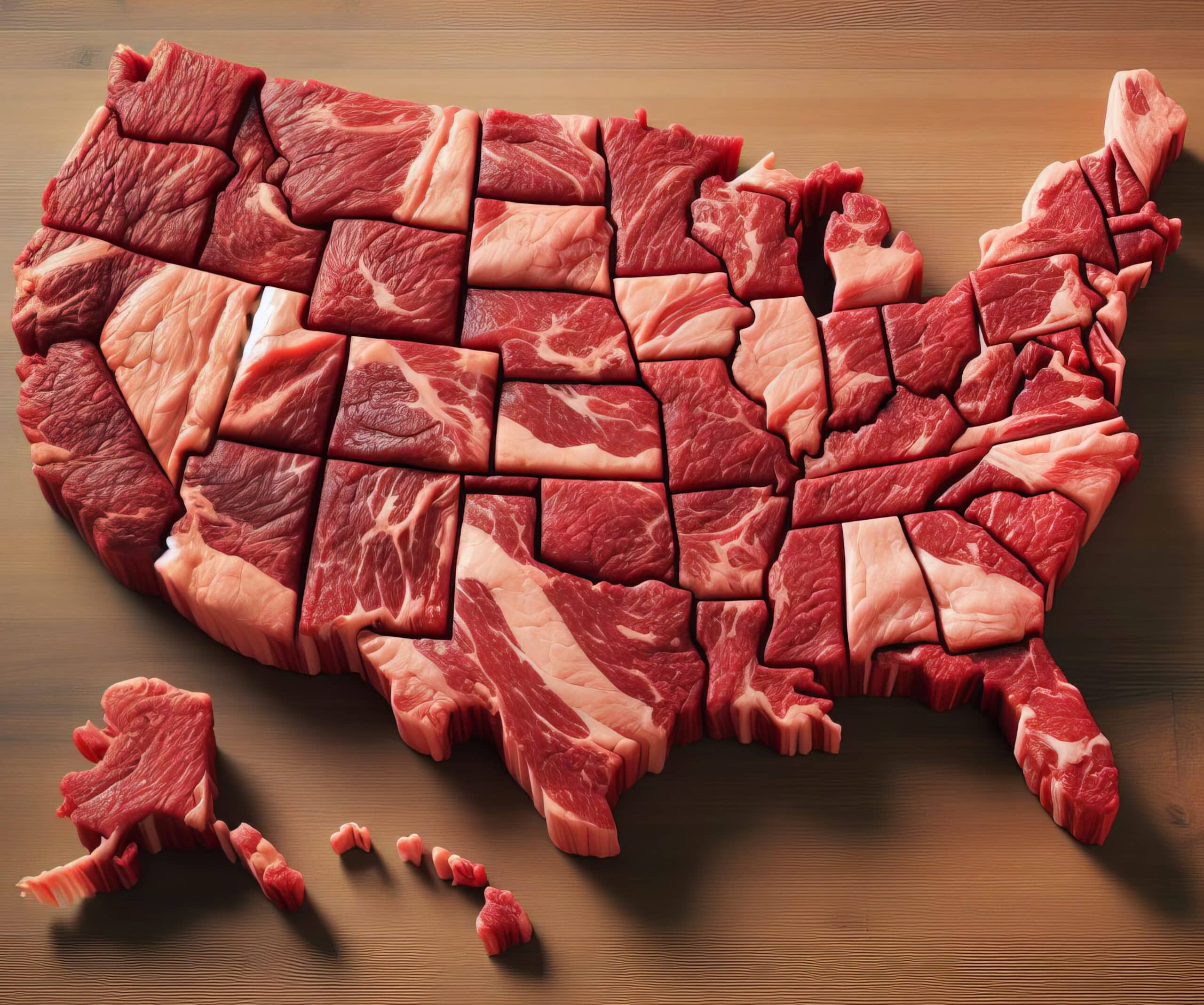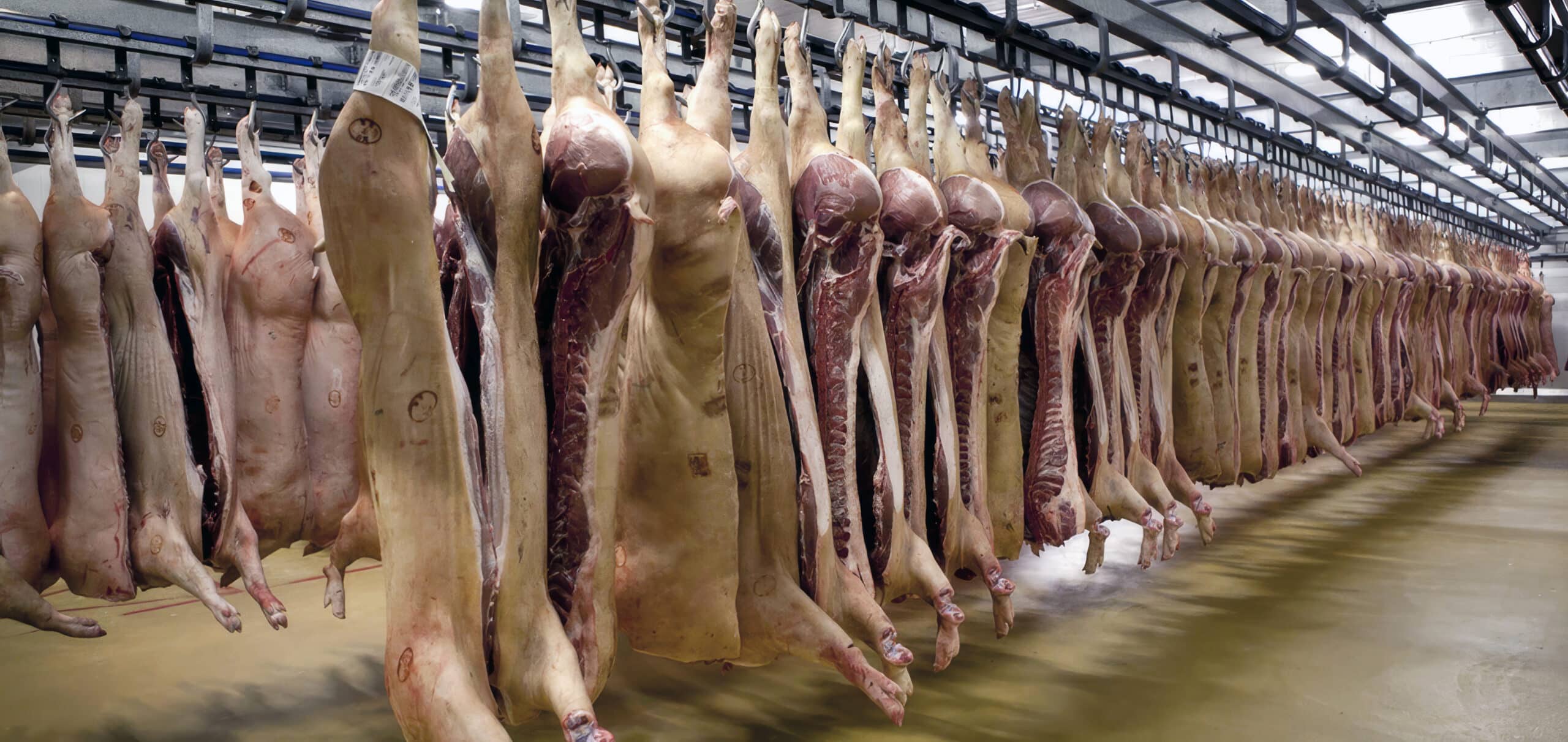
The American economy relies heavily on the beef industry, bridging agriculture and industry. Seedstock producers, cow-calf operations, feedlots, and beef packing plants are all essential to beef production and distribution in the network. In 2019, the industry’s global impact was felt through the export of 94 million cattle and beef products, worth $8 billion. This shows how the industry has a major impact on the economy and can compete worldwide.
The beef industry generates employment in various sectors such as farming, transportation, and retail. Local and national economies benefit from the extensive supply chain, which also promotes growth and sustainability. Meeting both local and global beef demands showcases the beef industry’s vital contribution to food security and economic growth. The beef industry secures a steady supply of high-quality beef through its extensive network, solidifying its role in the American economy.
The beef industry has a major impact on the U.S. economy, affecting urban markets and rural landscapes. The nation’s economic structure relies heavily on cattle ranching and beef production, which create jobs and foster community development. The sector’s economic engine thrives on high production levels, leading to revenue and various challenges and opportunities in the environment and society. The industry’s adaptability and innovation in the face of challenges demonstrate its economic resilience and vital contribution to national prosperity.
The heart of this industry lies in family farms, which epitomize American agriculture and play a crucial part in upholding the beef supply chain. These family-operated ventures, which make up 98% of all farms in the U.S. Family farms, which make up 98% of all farms in the U.S. and account for 88% of all production, are the backbone of the beef sector, ensuring quality beef reaches the tables of American households and international markets alike. The recognition of cattle farming as the most profitable livestock activity in 2022 signaled the enduring economic significance of the beef industry. This showcases how the industry generates wealth and underscores the crucial role of family farms in sustaining the sector’s vitality and sustainability, thereby solidifying their significance in the broader U.S. economy and society.
The success of the U.S. beef industry relies on its intricate network, which integrates different segments crucial to the production process. Seedstock producers, who are at the forefront of this network, are committed to improving cattle genetics. Through selective breeding, producers guarantee high productivity and quality in the beef industry. By meticulously focusing on genetics, beef cattle are not only enhanced but also contribute to more efficient use of resources, ensuring continuing beef production.

The beef supply chain relies on cow-calf operations, which come after the seedstock segment. In this place, cows are bred by farmers to produce calves, which are then raised until they reach a weight suitable for breeding or beef production. Maintaining this cycle is crucial for a consistent cattle supply in the industry. The role of feedlots is essential in ensuring cattle receive a specialized, high-energy diet for efficient growth to reach market weights. Resource utilization in this segment has significantly improved over the years, with modern feedlots requiring fewer resources to produce a pound of beef compared to 1970s methods. Beef packing plants have a vital role in sustainability by processing meat for consumption at the final stage. By using cattle byproducts, these facilities create valuable products like pharmaceuticals, cosmetics, and medical device components, minimizing waste and maximizing cattle utility. By emphasizing efficiency, quality, and sustainability, the beef production industry demonstrates its commitment through this comprehensive approach.
The U.S. beef industry is well-known for prioritizing the production of high-value, grain-fed beef, setting it apart from other nations. For instance, unlike India, where beef and dairy sectors are separated because of cultural and economic reasons, the U.S. focuses on integrating high-quality beef production as a significant part of its agricultural output. By strategically focusing on grain-fed beef production, the U.S. has become a prominent player in the global beef market, meeting the demand for high-quality beef products. The cattle industry in the U.S. faces significant challenges due to climate conditions and drought, which may reduce herd sizes and production output. Despite being susceptible to environmental influences, the industry’s resilience and strategic management have enabled it to successfully navigate through challenges.
Remarkable growth has been observed in the export market of the U.S. beef industry in the international arena. China became a crucial market as the U.S. beef export market reached a record high in 2022. The surge in demand from China can be credited to strategic trade agreements that opened new avenues for U.S. beef products. Canada, Mexico, Brazil, Australia, and New Zealand are among the major suppliers of beef to the U.S. in 2022. The interconnected nature of global beef trade is highlighted by Canada, the primary supplier. The U.S. beef industry’s complex global dynamics involve exporting high-quality grain-fed beef and importing to meet other consumer demands.
Recent years have posed significant challenges for the U.S. beef industry, with Bovine Spongiform Encephalopathy (BSE) outbreaks being particularly impactful. The health of the cattle was impacted by these incidents, resulting in significant changes in import and export regulations that transformed the U.S. cattle and beef trade. The consequences of BSE outbreaks prompted a review of safety protocols and traceability measures, highlighting the significance of maintaining high standards to guarantee consumer trust and market stability. Despite the challenges, the industry has shown resilience by adapting and continuing its operations.
Besides facing challenges, the U.S. beef industry has substantial opportunities for growth and expansion in emerging markets. Vietnam, Qatar, Pakistan, Turkey, and Russia have become promising markets for U.S. cattle exports, providing new opportunities for the industry. These markets provide an opportunity to broaden trade relationships and decrease reliance on conventional markets. Yet, the ongoing controversy regarding country-of-origin labeling (COOL) could have consequences for trade policies and how consumers perceive goods. The broader concerns about transparency and food origins, reflected in the COOL issue, can impact consumer choices and international trade agreements. The industry must address these concerns to seize opportunities in new markets and navigate global trade regulations.
The beef industry is crucial to the American economy, supporting jobs and contributing to the balance of trade. The industry’s economic impact was showcased by $8 billion worth of beef product exports in 2019 alone. This immense contribution underscores the industry’s importance in sustaining rural communities, where beef production often serves as the backbone of local economies. The beef industry supports rural areas by offering consistent income and employment opportunities, promoting their long-term viability and preventing economic decline.
Beef’s nutritional value is undeniable. In the American diet, beef serves as a primary source of high-quality, safe, and nutritious protein. The industry’s dedication to safety and quality has cleared up misunderstandings about the dietary impact of beef, highlighting its advantages. Beef is packed with important nutrients like iron, zinc, and B vitamins, which are vital for overall health. By educating the public, the Cattle Breeders’ Beef Board has emphasized the industry’s role in boosting both the economy and the nation’s overall well-being.
The US is known for being the world’s top producer of high-quality, grain-fed beef, which is highly sought after for its exceptional taste and richness. However, due to consumer preferences and environmental concerns, the demand for grass-fed beef has risen, making the U.S. a net importer in this segment. The beef industry’s global dynamics are complex, influenced by shifting dietary trends, environmental concerns, and health-conscious consumers. The shift towards grass-fed beef, known for its perceived health benefits and lower environmental footprint, presents both challenges and opportunities for the U.S.
